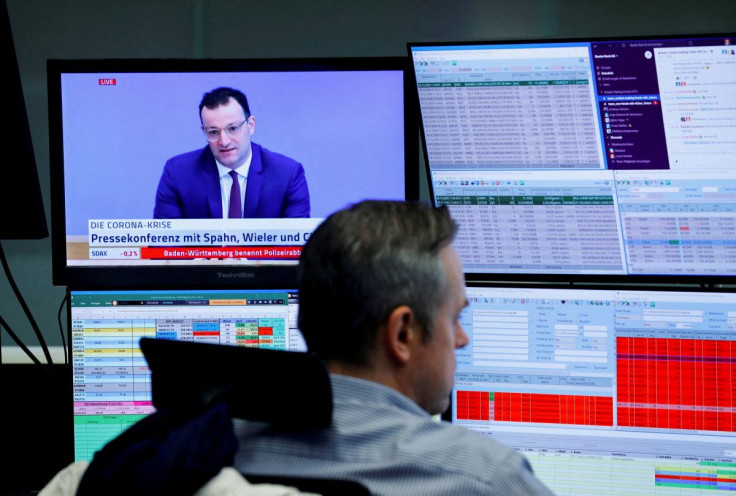Markets Mostly Quiet Ahead Of Fed Decision, Crude Jumps

U.S. and European equities mostly wavered on Wednesday while Treasury yields moved higher ahead of a widely expected Federal Reserve decision to hike interest rates and reduce liquidity to tame inflation rising at the fastest pace in 40 years.
The Fed is expected to announce at 2 p.m. (1600 GMT) a 50 basis point rate hike and plans to reduce its $9 trillion balance sheet by as much as $95 billion a month.
Gold eased and the dollar traded little changed against a basket of currencies as the market awaited the Fed to detail policy that many see as too long in the making, with inflation more embedded than officials would like to acknowledge.
"Ultimately the Fed is going to have to slow down this economy more than people would like and the risks of a harder economic landing are much higher than they were a quarter or two ago," said David Petrosinelli, senior trader at InspereX.
"The Fed is in a very precarious position. Some of it are its own doing, some of it isn't."
MSCI's gauge of stocks across the globe shed 0.46% while the pan-European STOXX 600 index lost 0.66%. On Wall Street, the Dow Jones Industrial Average rose 0.11%, the S&P 500 lost 0.27% and the Nasdaq Composite dropped 1.05%.
Overnight in Asia many Chinese and Japanese stock markets were closed.
U.S. Treasury yields were a touch higher, keeping multi-year highs in sight, as the front end of the curve moved up more than the back end.
The two-year U.S. Treasury yield was up 3.1 basis points at 2.801%, while the 10-year note was up 2.9 basis points to yield 2.987%.
"If the Fed provides an indication they will aggressively front-load the tightening cycle and the back end of the Treasury curve comes off a bit, that will be the indication that markets are starting to price the Fed getting ahead of the curve," said ING Bank strategist Francesco Pesole.
Oil prices jumped as the European Union, the world's largest trading bloc, spelled out plans to phase out imports of Russian oil, offsetting demand worries in top importer China.
European Commission President Ursula von der Leyen proposed a phased oil embargo on Russia over its war in Ukraine, as well as sanctioning Russia's top bank, in a bid to deepen Moscow's isolation.
U.S. crude rose 3.32% to $105.81 a barrel and Brent was at $108.48, up 3.34% on the day.
The dollar was little changed near 20-year highs, having already priced in a Fed hike and some 250 basis points in increases by year-end.
The dollar index fell 0.048%, with the euro up 0.14% to $1.0535.
The Japanese yen strengthened 0.09% at 129.97 per dollar.
The global monetary tightening cycle has reached a symbolic milestone, with yields on German, British and U.S. 10-year government debt topping 1%, 2% and 3% respectively, levels not seen in years. That in turn has raised borrowing costs for businesses and households.
The Bank of England is expected to lift British rates on Thursday by a quarter of a percentage point, which would be its fourth hike in a row to quell surging prices.
The Aussie dollar gained as much as 1.3%, and local shares fell, after the Australian central bank's bigger-than-expected 25 basis point rate increase on Tuesday.
Bitcoin rose 2.76% to $38,769.94.
© Copyright Thomson Reuters {{Year}}. All rights reserved.





















